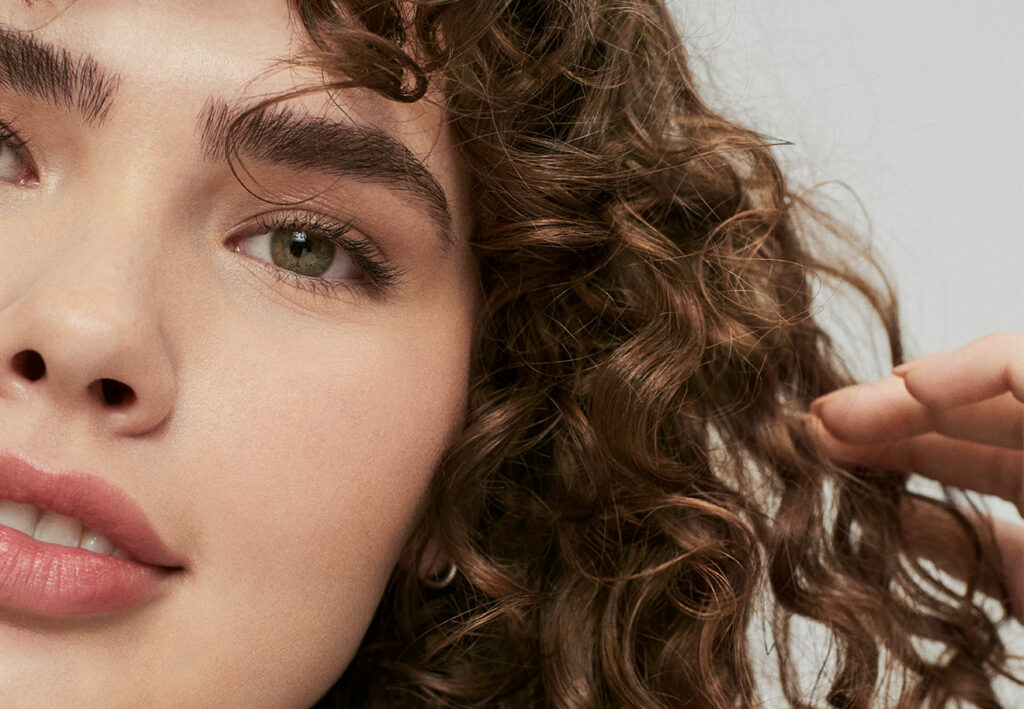What is porosity?
Porosity starts at the cuticle, which is the outer layer of your hair. Microscopic overlapping scales, similar to overlapping roof tiles or shingles, make up this flexible layer and protect the inner layers of each strand.
How tightly those tiny layers overlap determines your hair’s porosity. There are generally three categories of hair porosity:
Low porosity hair
Hair with low porosity has cuticle scales that overlap tightly, keeping out moisture. This trait also means conditioning products and hair treatments stay on the surface instead of seeping into the hair strand where they can do their job.
Characteristics of low porosity hair include:
- Slow to dry after a shower
- Products tend to sit on the surface of the hair without soaking into the shaft
- Shower water takes a while to penetrate the hair, so it doesn’t saturate easily
Medium porosity hair
Medium porosity hair has overlapping cuticle scales that allow some moisture in while maintaining an effective protective barrier.
Characteristics of medium porosity hair include:
- Quickly air-dries after a shower
- Easy to style and holds its shape for a long time after styling
- Dyes evenly and retains color well without fading
High porosity hair
Hair with high porosity has widely spaced scales in the cuticle, which lets in plenty of moisture but does not retain it well. High porosity hair can become dehydrated as moisture leaches out.
Characteristics of high porosity hair include:
- Strands tend to break easily
- Absorbs products quickly
- Air-dries rapidly after a shower
- Tends to feel dry to the touch
How to know if your hair is healthy
How to test for hair porosity
Fill an 8-ounce glass with room-temperature water and drop a strand of clean, dry hair into the glass. Avoid using recently treated hair since product buildup can affect the test results.
If your strand of hair floats at the top of the water, it has low porosity. High porosity hair sinks to the bottom of the glass quickly. Hair that sinks slowly or hovers in the middle of the glass indicates normal or medium porosity.
You can also feel the texture of your hair to get an idea of the porosity level. Run a fingertip down a single strand and feel for bumps along the length of the hair. The bumpier and rougher your strand feels, the higher the porosity they are since what you’re feeling are open cuticles that let in moisture and hair products.
Treating low porosity hair
When treating low porosity hair, the goal is to get more product into the shaft. Steam and heat can help, so applying gels, creams, or oils immediately after a hot shower is a good idea.
You might also want to try a heat cap or hooded dryer to help improve moisture penetration during hair drying. Regular heat treatments and deep treatments penetrate the hair shaft as well, making these a must for low porosity hair.
When choosing a conditioner for low porosity hair, look for one without protein. Hair absorbs protein-free conditioner more easily, while protein ingredients may lead to buildup. Also, avoid using oil-based ingredients on low porosity hair since they can coat the surface and prevent moisture from making its way into the hair shaft.
Treating high porosity hair
Since high porosity hair absorbs moisture quickly but doesn’t retain it well, its products usually contain oils or protein to lock in active ingredients and prevent moisture loss. Shea butter is another effective ingredient for locking moisture into the hair shaft. Prose custom hair oil blends various natural oils to give you a formula perfectly suited to your high porosity locks.
Heat is high porosity hair’s enemy, so keep your shower temperature lukewarm instead of steaming hot. A quick blast of cold water at the end of your shower can help tighten the cuticle and lock in products. Applying a heat protectant before drying high porosity hair often helps reduce moisture loss, or you can opt to air-dry and forgo heat entirely.
Leave-in conditioners and treatments, such as the Prose custom leave-in conditioner, continue to deliver hydrating ingredients over time and provide a sealing layer to keep that moisture in. If you have high porosity hair, it is a good idea to use a deep conditioner at least once or twice a week.
Products for medium porosity hair
Medium porosity hair tends to be well-balanced in terms of moisture absorption and retention. Regular hydration and products with nourishing ingredients help keep medium porosity hair healthy. Gentle products that protect your hair from environmental damage, including pollution and UV rays, can help you maintain a balanced normal porosity.
What affects hair porosity?
Hair porosity is mostly a matter of genetics, so you are likely to have hair porosity similar to your parents. Other factors can affect the hair cuticle, though.
Chemical treatments, including bleaching and straightening, can cause cuticles to loosen and open up, making it harder for your hair to retain moisture. Overwashing and blow-drying can also damage the cuticles over time.
UV exposure is another cause of cuticle damage that can affect your hair’s porosity. Wearing a hat or scarf on sunny days can help protect hair from UV rays and reduce this type of damage.
Take the Prose hair consultation to get a customized recommendation for products and supplements tailored specifically to your hair type and hair porosity.





